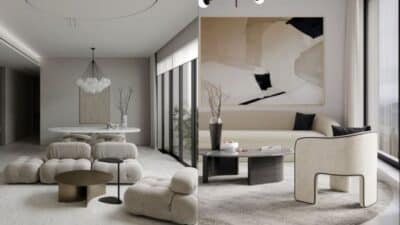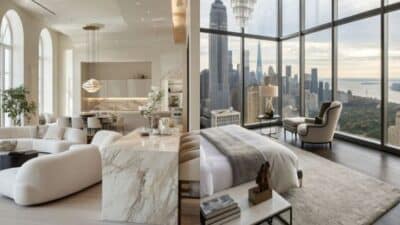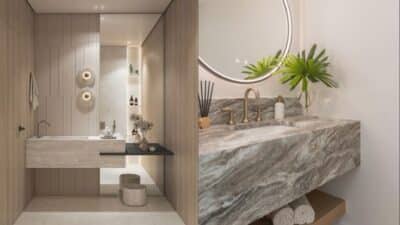

An autumn color palette for the home uses warm, earthy tones inspired by the season. Colors like burnt orange, deep reds, mustard yellows, and soft browns create a cozy and inviting atmosphere. These shades work well together to bring the feeling of fall indoors.
Choosing the right autumn colors depends on the style of the room and the mood desired. Mixing rich hues with natural textures like wood and fabric enhances the seasonal feel.
Accent pieces such as throw pillows, rugs, and curtains help tie the look together. Proper lighting also plays a key role in highlighting these colors and adding warmth.
Key Takeaways
- Warm, earthy colors create a cozy autumn vibe.
- Natural materials and textures enhance fall colors.
- Lighting and accents complete the seasonal look.
What Is an Autumn Color Palette for Home?
An autumn color palette for home includes warm, muted shades that reflect the changing leaves and natural elements of fall. These colors create cozy and inviting spaces, balancing rich tones with soft neutrals.
Defining Autumnal Tones

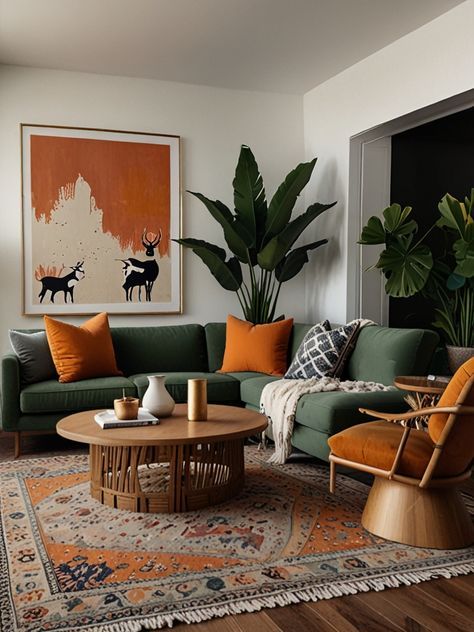
Autumnal tones often include deep oranges, rusty reds, golden yellows, olive greens, and warm browns. These colors mimic the leaves and earth seen in autumn months. They are usually muted, not bright or neon, to keep a calm and natural feel.
This palette also features neutral shades like cream, beige, and warm gray. These tones help balance the stronger colors and prevent the space from feeling too dark or overwhelming.
Why Autumn Colors Suit Interior Spaces
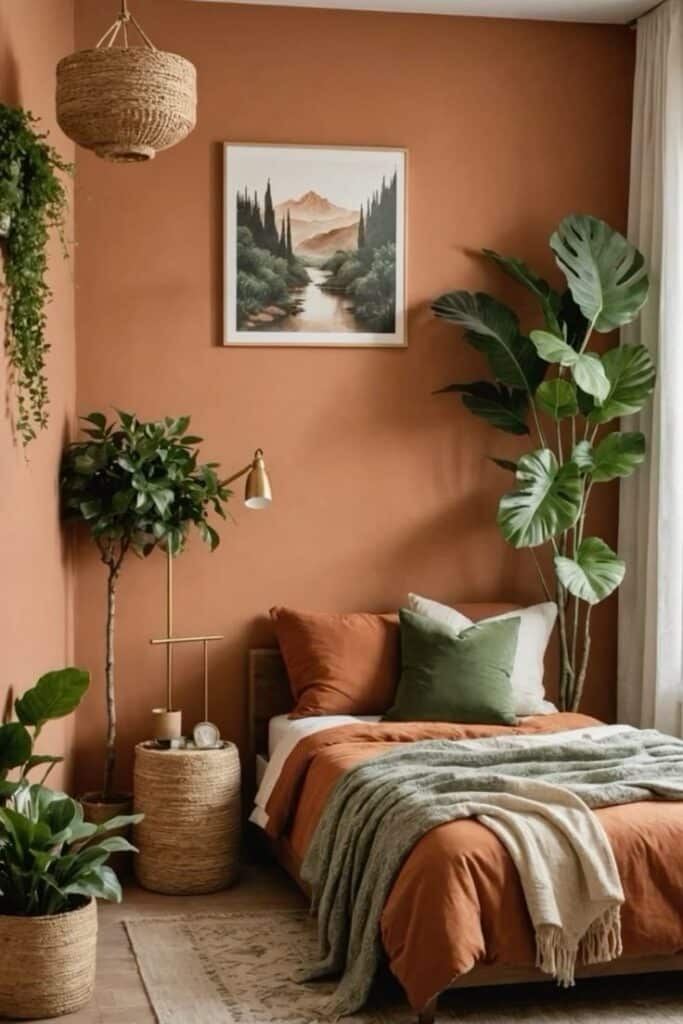

Autumn colors work well in homes because they bring warmth and comfort. The rich tones can make a large room feel cozier or add depth to smaller areas. These colors often encourage relaxation and a welcoming mood.
The palette fits many styles, from rustic and traditional to modern and minimalist. Using autumnal colors can highlight wood finishes and natural materials, enhancing the overall design.
Key Features and Emotions Evoked


The key features of this palette are warmth and earthiness. The colors connect indoor spaces with nature’s seasonal changes. This connection helps create a grounded and peaceful atmosphere.
Emotions such as comfort, security, and calm are commonly evoked. These colors often remind people of home, family gatherings, and quiet moments, which makes them a popular choice for living rooms and bedrooms.
Popular Autumn Color Palettes
Autumn color palettes often combine rich, warm tones with softer, natural shades and deep, bold colors. These options can create different moods depending on the mix and use of colors. Choosing the right palette depends on the style and atmosphere desired for a home.
Classic Warm Hues
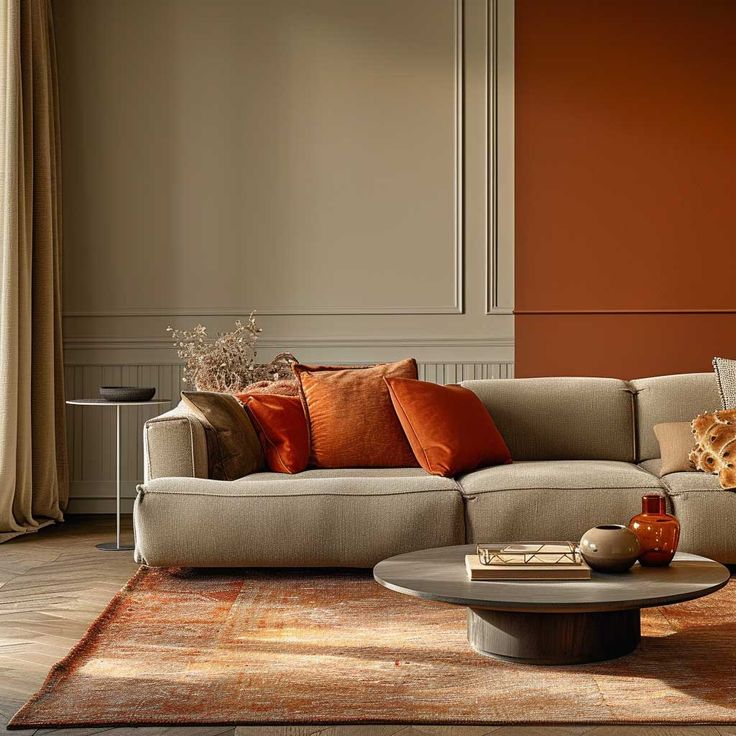
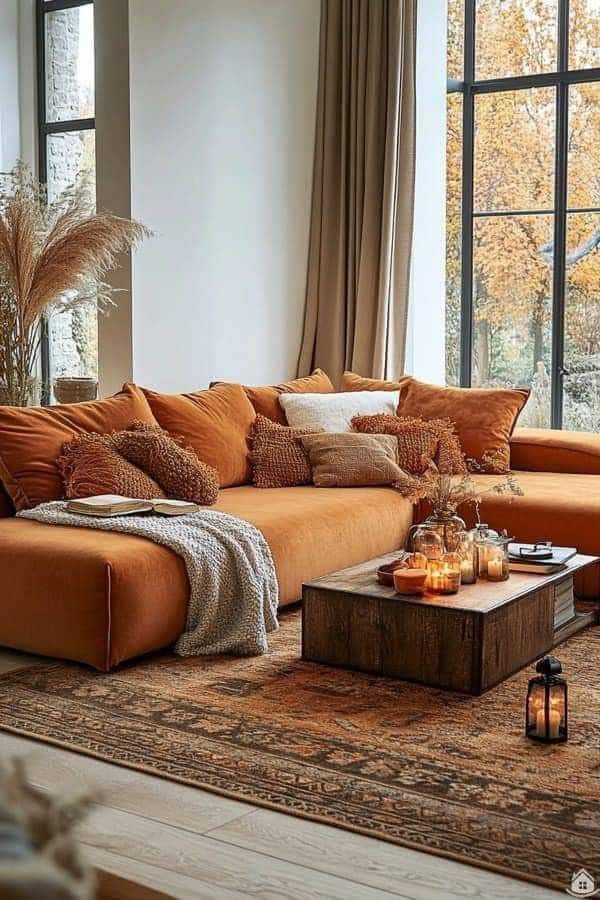
Classic warm hues include shades like burnt orange, mustard yellow, and deep red. These colors bring a sense of warmth and comfort, mimicking the fall leaves. They work well in living rooms and kitchens to create a cozy feel.
These colors pair nicely with neutral tones like beige, cream, and brown. Using wood furniture or accents enhances the natural feel of this palette. It is a safe choice for those who want a traditional autumn look without being too bright or busy.
Muted and Earthy Schemes
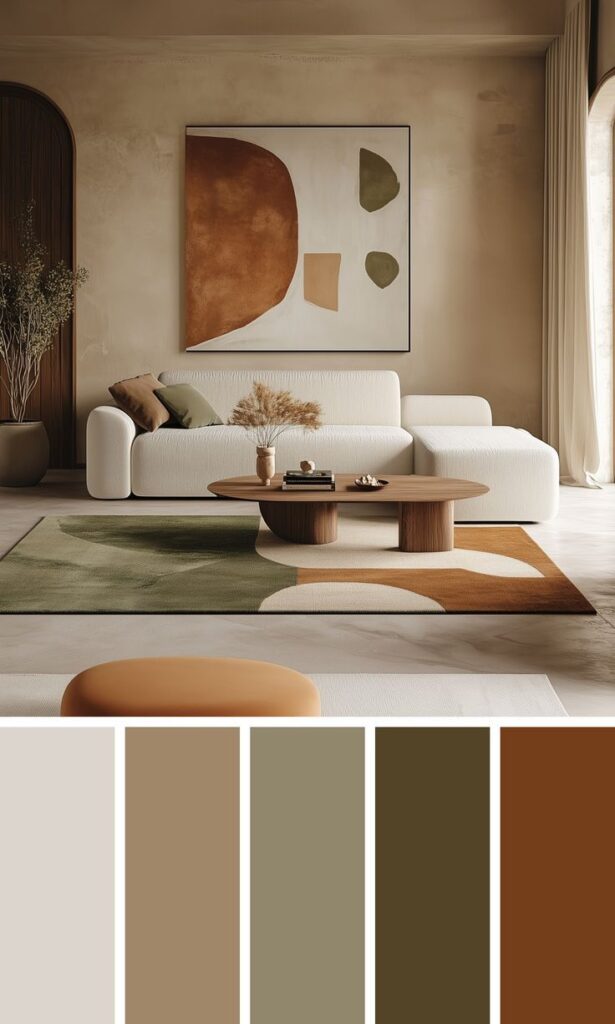
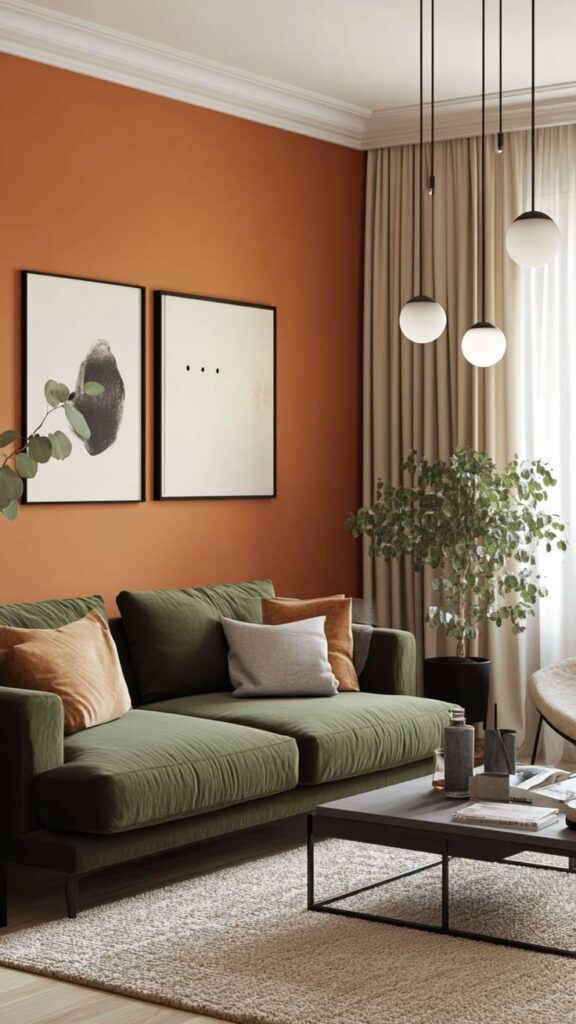
Muted and earthy schemes focus on soft, natural colors such as olive green, taupe, and soft rust. These tones blend well with natural materials like wood, stone, and linen. They offer a calming and grounded atmosphere in any room.
This palette fits well in bedrooms and dining areas where a more subtle fall look is desired. It avoids bright colors and instead highlights the softer side of autumn. These colors often create a relaxed space that feels close to nature.
Jewel Tones for Fall
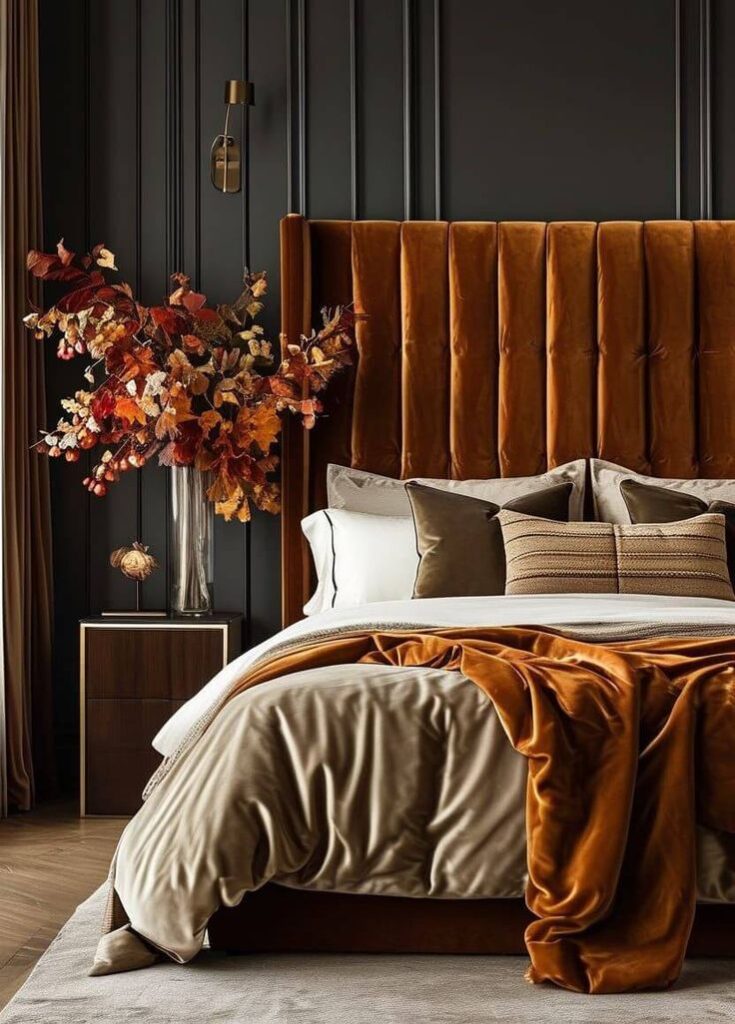
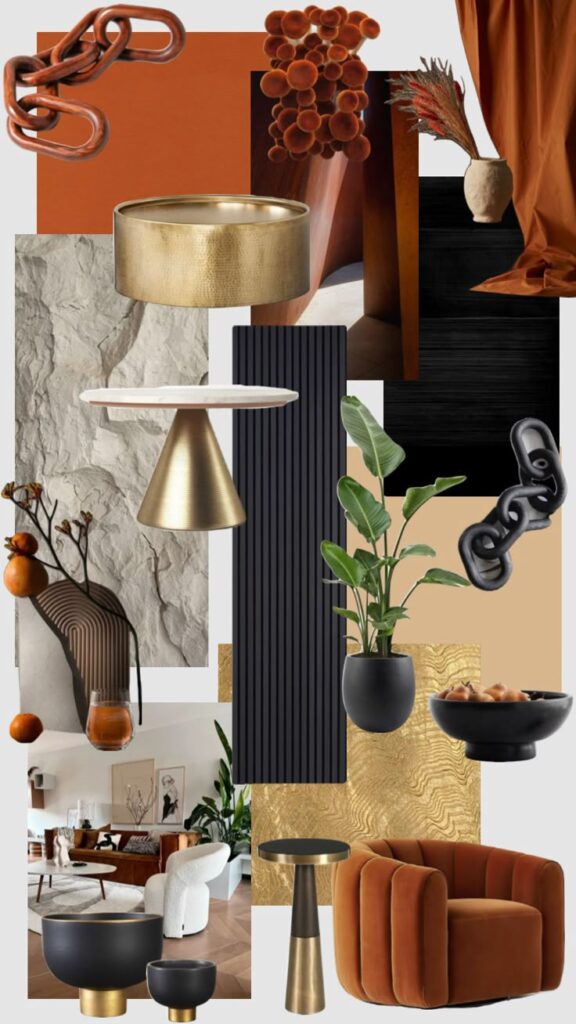
Jewel tones include deep colors like emerald green, sapphire blue, and amethyst purple. These rich shades add luxury and depth to autumn decor. They work well in accent pieces, such as throw pillows, rugs, or curtains.
Jewel tones complement other autumnal colors like gold and copper. This palette is great for those who want a bold, elegant look during fall. It can make a space feel more vibrant and sophisticated while still keeping an autumn vibe.
Selecting the Right Autumn Colors
Choosing autumn colors for a home involves thinking about how light affects colors, fitting new hues with what is already there, and planning for changes as the season moves on. These points help create a cozy and balanced look.
Considering Light and Space
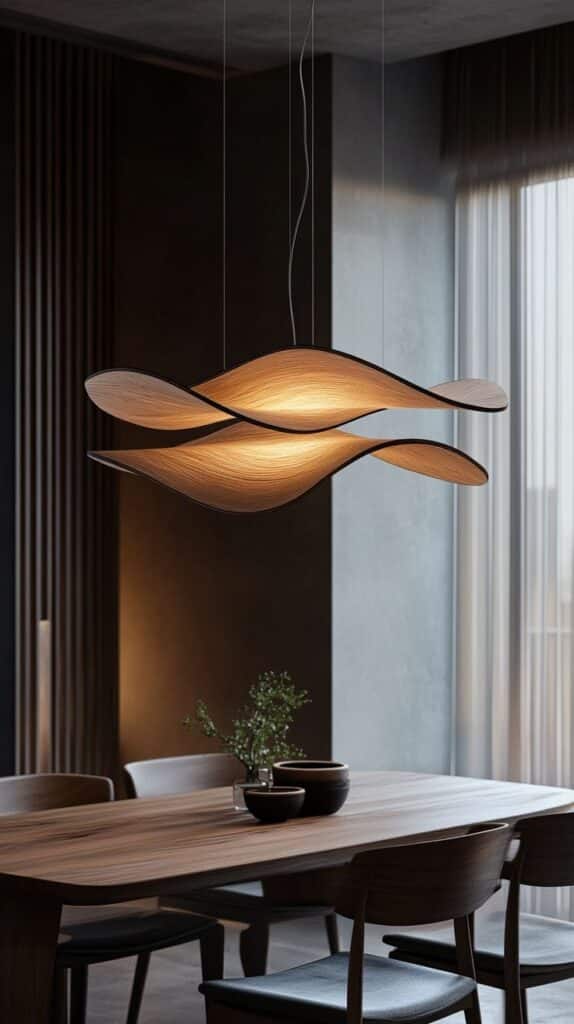
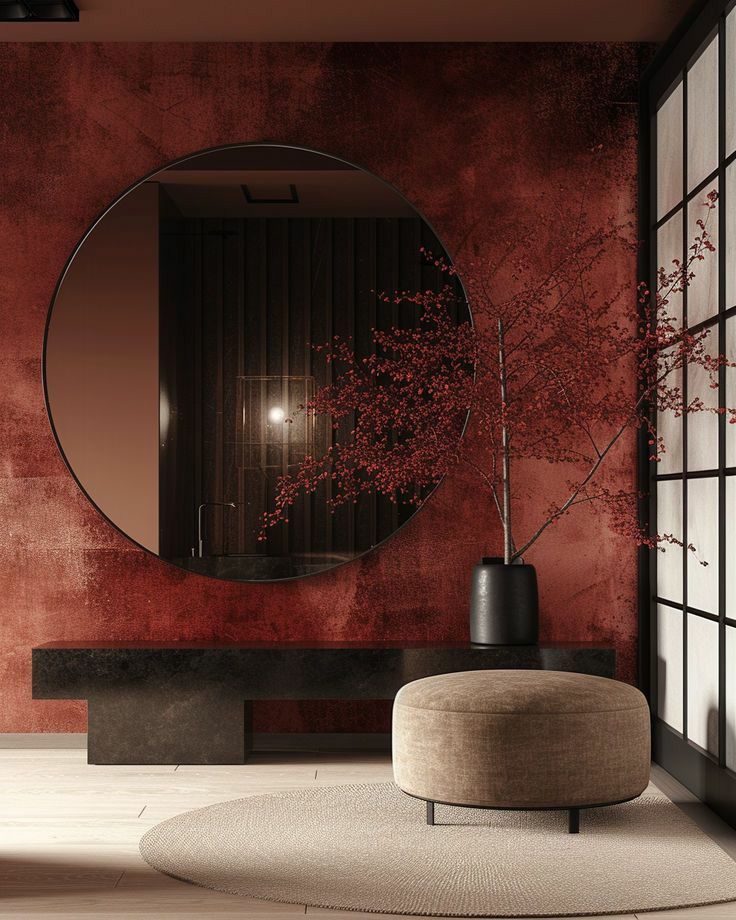
Light changes how colors look in a room. Warm autumn shades like burnt orange or deep red can look brighter in natural sunlight but might feel dark in rooms with less light.
Rooms with lots of windows handle dark colors well, adding warmth without feeling cramped. In smaller or darker spaces, lighter autumn tones such as soft gold or muted tan work better.
Space size also matters. Large areas can handle bold colors, while small spaces benefit from soft, warm neutrals that make the room feel open and inviting.
Matching with Existing Decor

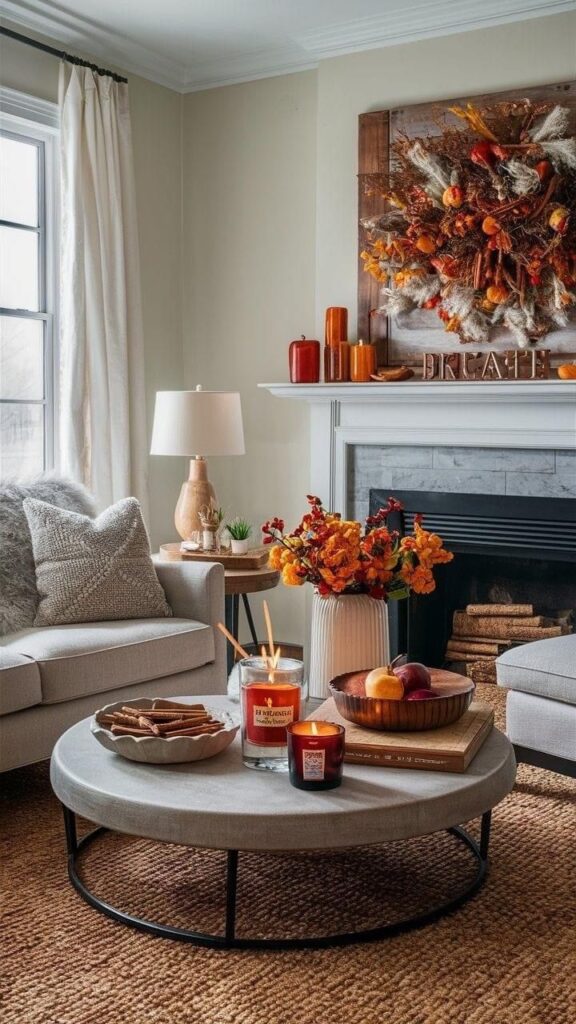
Autumn colors should blend with furniture and other decor items already in place. If the home has wooden furniture, warm browns and rust tones enhance the natural look.
Textiles like rugs, curtains, and pillows are easy spots to add autumn hues without a full repaint. Striking a balance between new colors and old patterns keeps the space from feeling cluttered.
Using a color wheel can help pick shades that work well together. For example, pairing olive green with deep oranges creates harmony while keeping the season’s feel.
Seasonal Color Transitions
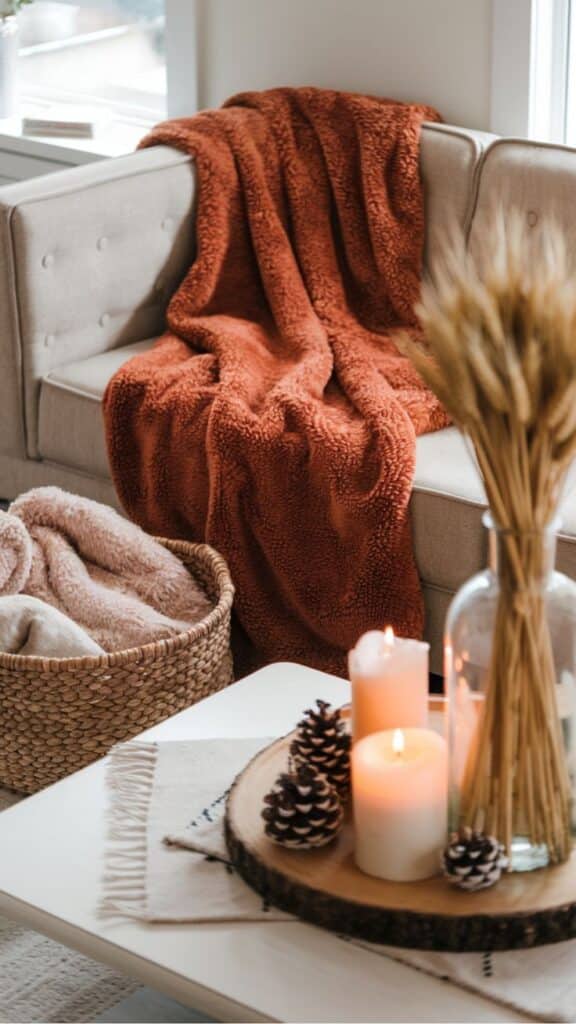

Autumn colors don’t have to stay the same all season. Starting with fresh, bright shades like crisp apple red can energize a space early on.
As fall progresses, deeper colors like maroon or pumpkin spice create a warmer, more relaxed vibe. Gradually swapping out smaller accents like throw blankets or wall art keeps the space feeling fresh.
This approach lets the home evolve with the season, rather than staying fixed on one look. It also allows flexibility for personal style and comfort.
Incorporating Autumn Colors in Different Rooms
Using autumn colors can bring warmth and comfort to any room. Deep oranges, rich reds, and earthy browns work well with natural textures like wood and linen. These colors help create inviting spaces with a seasonal touch.
Living Room Color Ideas
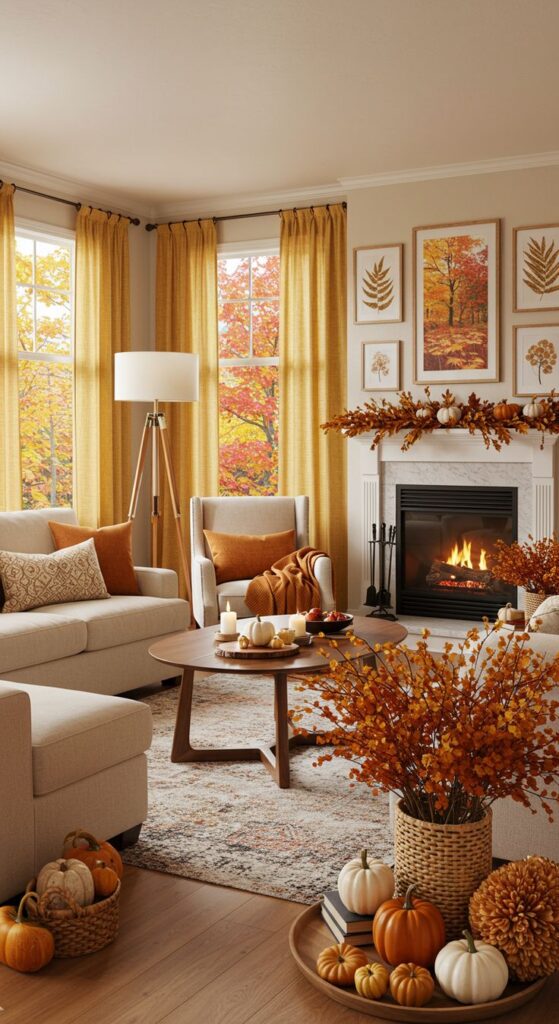
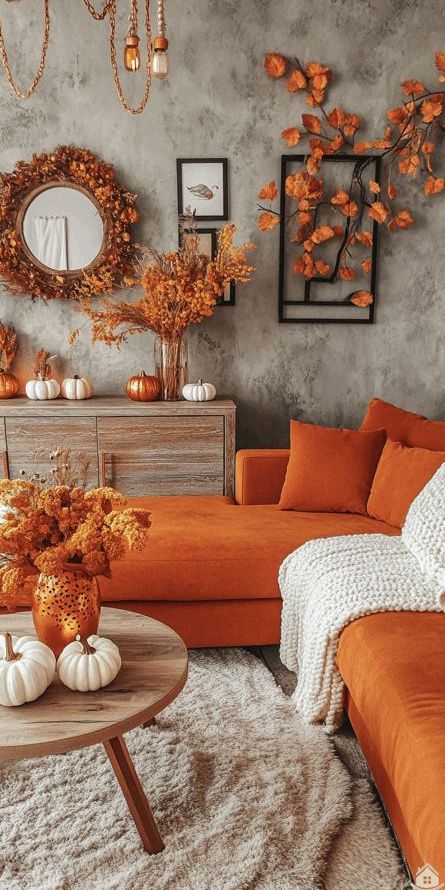
In the living room, burnt orange and rustic red make strong focal points. These shades can be added through throw pillows, rugs, or an accent wall. Pairing these colors with neutral tones like cream or beige balances the brightness.
Wood furniture with natural finishes complements autumn hues well. Consider adding soft lighting with amber lampshades to enhance the cozy atmosphere. Using plants with autumn-colored leaves adds a natural element.
Kitchen and Dining Spaces
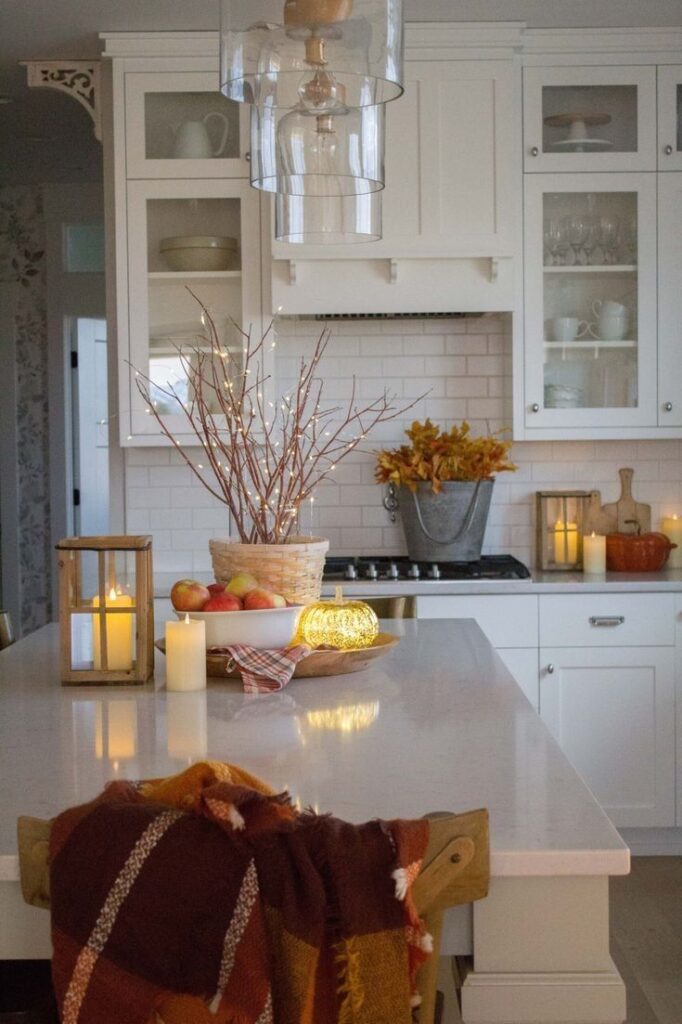
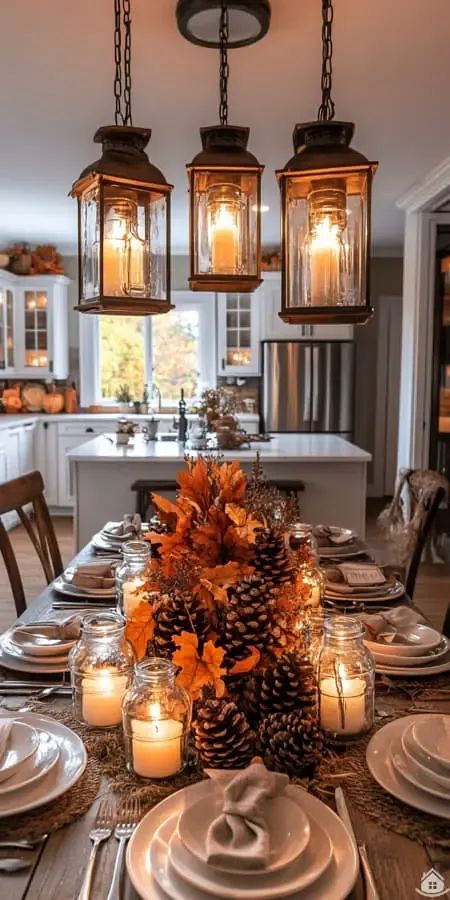
In kitchens and dining areas, warm yellows and deep reds stimulate appetite and conversation. Painting a single wall mustard yellow or adding red accessories like napkins and table runners can refresh the space.
Copper pots and wooden utensils add texture that fits the autumn theme. Earth-toned ceramics and glassware also match well. These touches create a warm and welcoming area for meals.
Bedroom Palettes
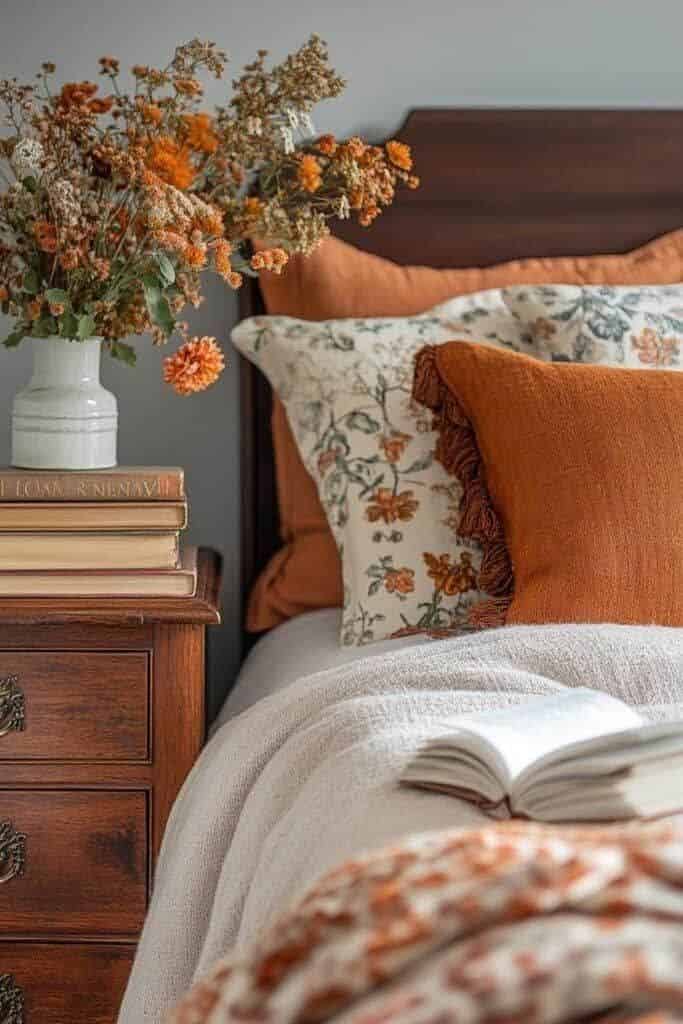
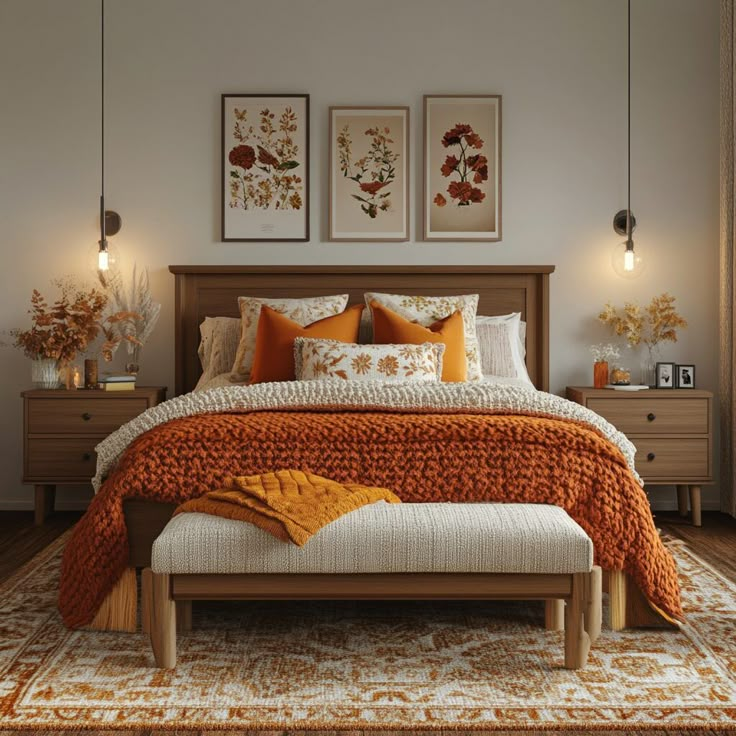
For the bedroom, softer autumn colors work best. Muted shades of pumpkin, taupe, and olive green promote relaxation without overwhelming the senses.
Bedding in these tones combined with natural materials such as cotton or wool adds comfort. Accent pieces like a burnt sienna throw blanket or rust-colored curtains complete the look, making the bedroom feel both restful and stylish.
Autumn-Inspired Accent Pieces
Autumn-themed accents bring warmth and color to any home. Rich textures and earthy shades help create a cozy and inviting space. Details in fabric, art, and soft furnishings add subtle seasonal charm without overwhelming the room.
Textiles and Upholstery

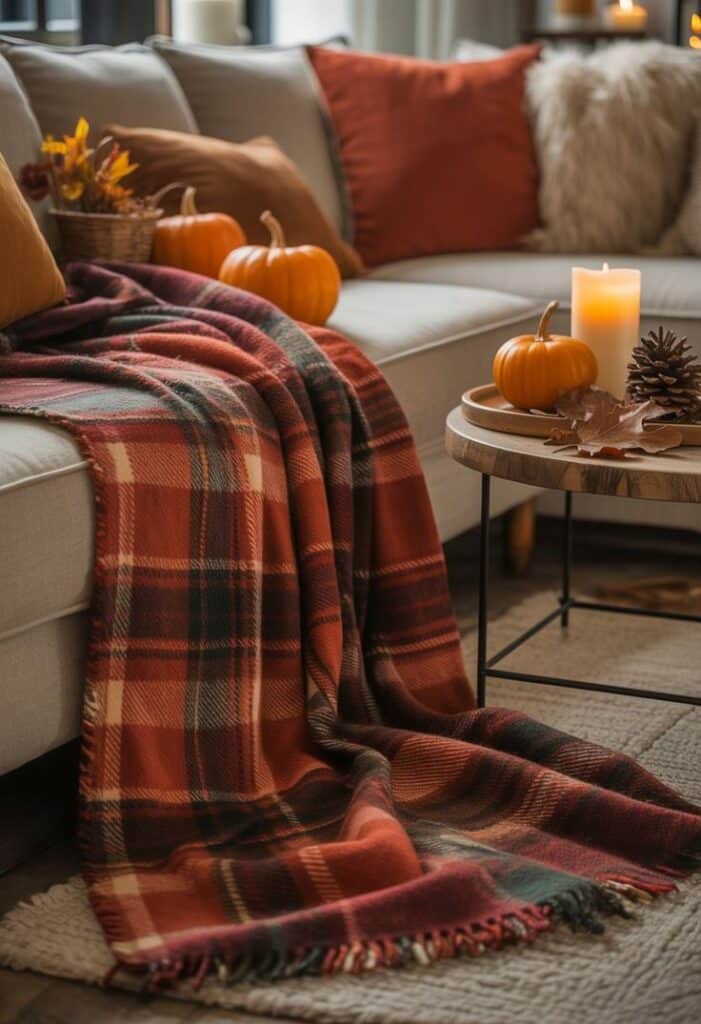
Textiles are an easy way to introduce autumn colors. Look for cushions and curtains in burnt orange, deep red, mustard yellow, and olive green. These colors reflect fall leaves and add richness to the room.
Materials like velvet and wool work well because they feel warm and soft. Upholstered chairs or sofas in these fabrics enhance comfort during cooler months. Mixing patterns like plaids or subtle leaf prints adds interest while staying seasonal.
Switching slipcovers or adding throws in these colors can update furniture without buying new pieces. It’s a simple way to bring a fresh fall look into the home.
Wall Art and Decorative Accessories


Wall art in autumn themes creates a focal point without needing a full room makeover. Prints or paintings with leaf motifs, trees, or warm landscapes bring the season inside.
Decorative accessories such as ceramic pumpkins, amber glass vases, or wooden bowls filled with acorns emphasize natural elements. These pieces work well on shelves, mantels, or entry tables.
Metal accents in bronze or copper add shine while staying warm-toned. Keep decor minimal and focused on textures and colors found in nature for the best effect.
Rugs and Throws


Area rugs in autumn shades anchor a room and add warmth underfoot. Choose rugs in burnt sienna, rust, or forest green tones. Patterns like Southwestern or geometric designs complement fall colors well.
Throws made from wool or chunky knit are both functional and stylish. They offer extra warmth and a tactile element to sofas and beds. Layering multiple throws in coordinating fall colors increases comfort and visual depth.
Rugs and throws allow for seasonal changes with little hassle. They help create a snug atmosphere perfect for the cooler months.
Paint and Wall Treatments for Fall Ambience
Warm, rich colors and textured surfaces bring a cozy autumn feel to any room. Deep reds, burnt oranges, and soft browns work well to create an inviting space. Different wall treatments add interest and can highlight certain areas effectively.
Feature Walls in Autumn Shades
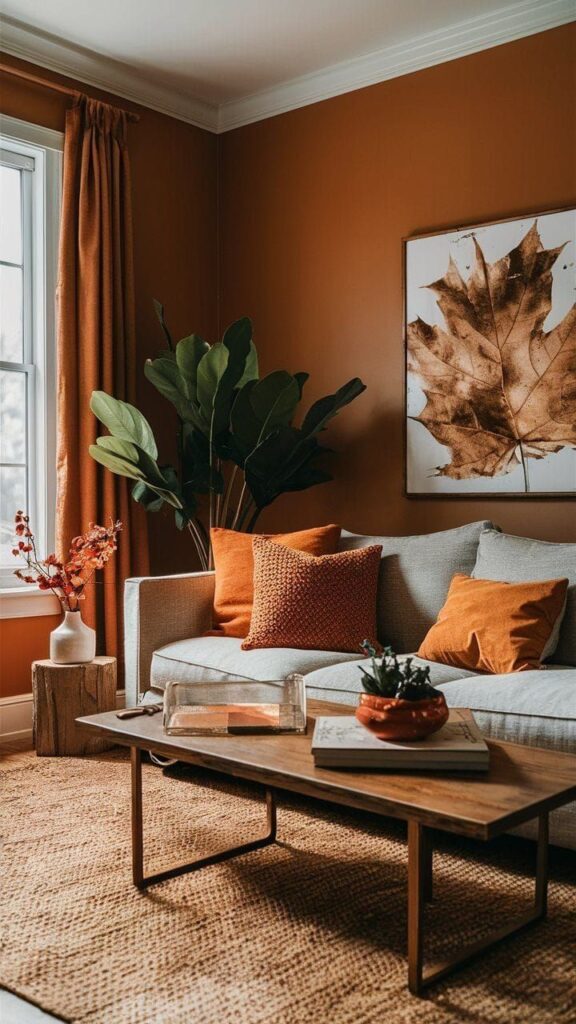
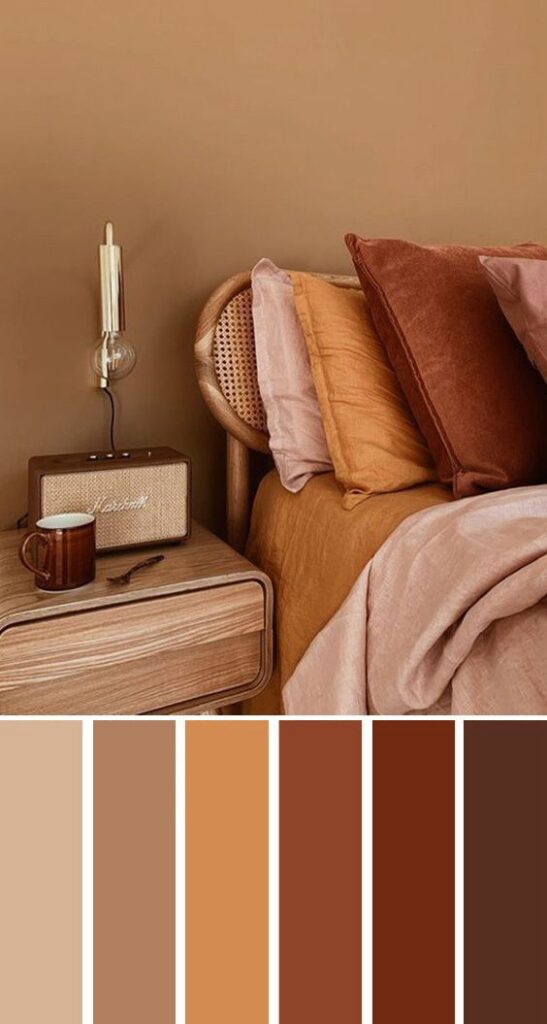
Feature walls painted in autumn tones bring warmth without overwhelming the room. Colors like mustard yellow, rust, or deep olive make a strong statement when used on one wall. This technique is perfect for living rooms, dining rooms, or bedrooms.
Using matte or eggshell finishes can soften the look. Pairing these colors with neutral walls keeps the room balanced. Texture paint or techniques like sponging add depth and mimic natural elements of fall, like leaves or bark.
Wallpaper Patterns Inspired by Fall
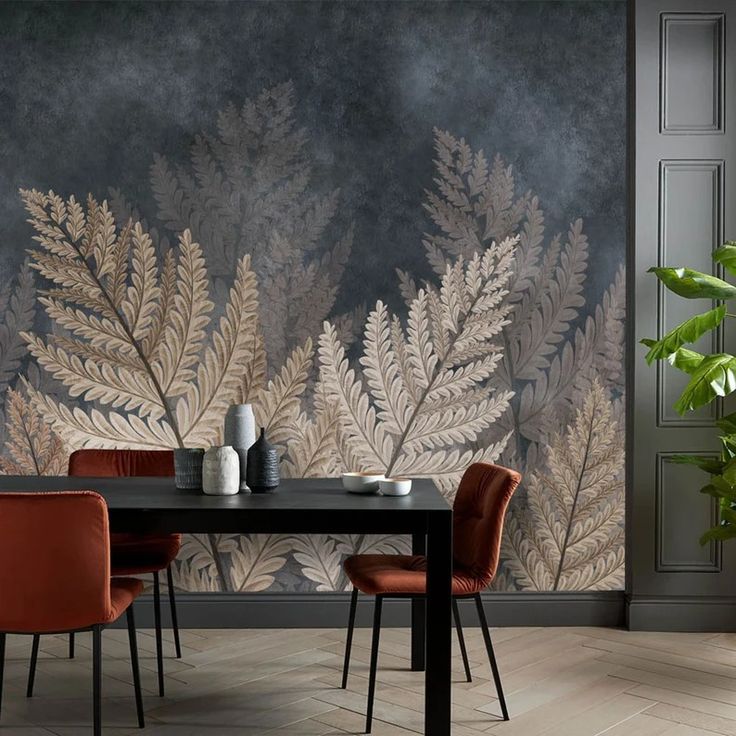

Wallpaper with autumn themes adds detail and interest beyond paint. Look for patterns with leaves, branches, or subtle plaids in earthy tones such as bronze, terracotta, or moss green.
Textured wallpapers can bring a tactile feel that enhances a room’s warmth. Grasscloth or linen-like patterns are popular choices for fall. Installing wallpaper on a single wall helps avoid making the room too busy while still capturing seasonal charm.
Natural Materials and Texture Pairings
Using natural materials adds depth to autumn color schemes. Textures like wood, woven fibers, and organic textiles help create warmth and coziness. These materials bring contrast and interest while staying aligned with earthy, fall-inspired colors.
Wood and Woven Elements
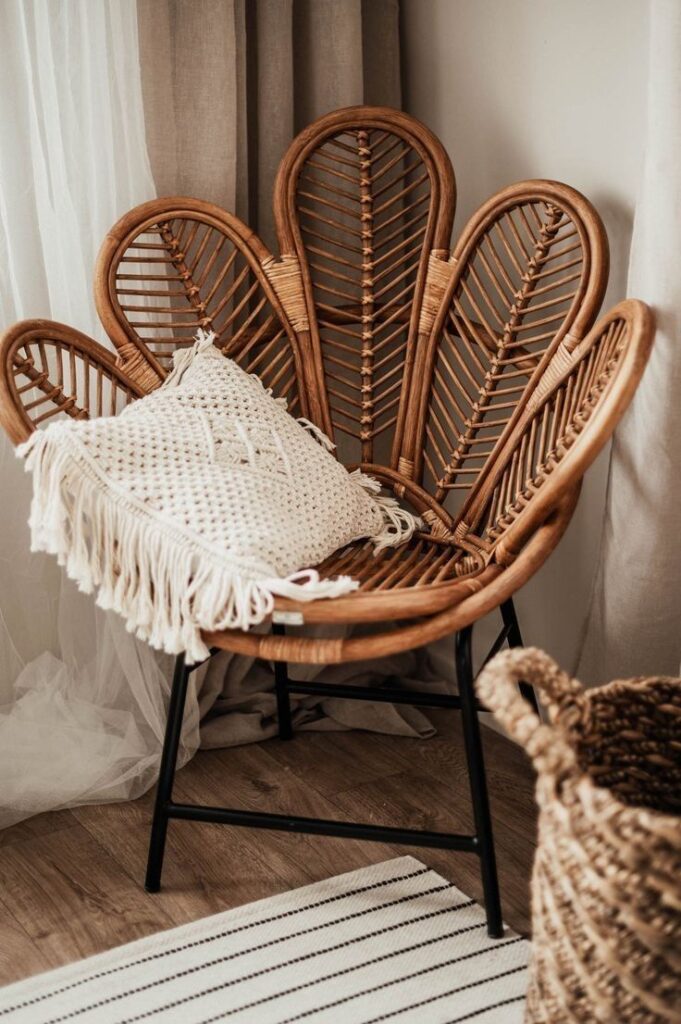
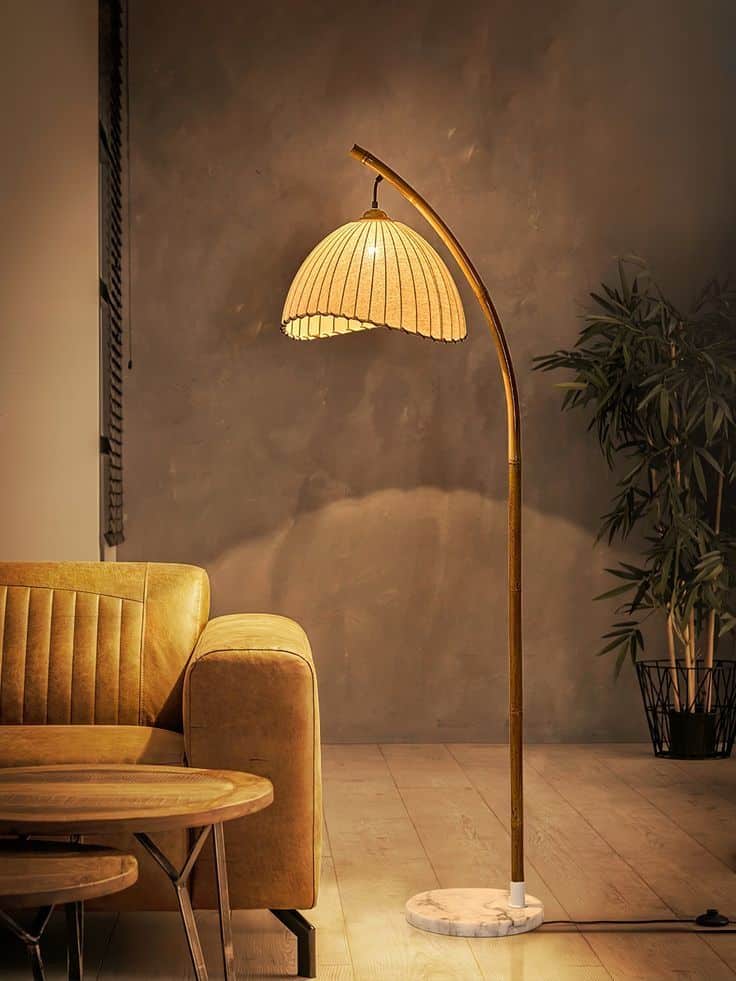
Wood tones, especially in deep browns, honey, and russet, complement autumn colors well. Hardwood furniture, wooden picture frames, and rustic shelves provide an earthy base. Lighter woods like oak or birch can soften a space without losing the natural feel.
Woven elements such as rattan baskets, wicker chairs, and seagrass rugs add tactile interest. These pieces bring natural patterns and shapes that balance smooth surfaces. Combining these textures gives a room a layered, inviting quality that matches fall’s outdoorsy vibe.
Layering Organic Textiles


Textiles made from wool, linen, or cotton suit autumn palettes perfectly. Wool throws and knitted cushions in burnt orange, mustard, or deep red add warmth. Linen table runners or curtains in muted earth tones introduce subtle texture without heavy weight.
Layering different fabrics creates visual richness. Mixing rough weaves with soft, cozy knits offers contrast that feels natural and comfortable. Choosing textiles in warm, muted colors keeps the look grounded in autumn without overwhelming the space.
Lighting to Complement Autumn Palettes
Lighting plays a key role in showing off autumn colors in a home. It can warm up the space and bring out the rich reds, oranges, and browns used in the decor. The right fixtures and light bulbs help create a cozy and inviting atmosphere.
Warm Lighting Techniques


Using warm light bulbs is important to match autumn colors. Bulbs labeled 2700K to 3000K give off a soft, yellowish glow that enhances oranges, reds, and golds. Avoid cool, blue-toned bulbs because they make warm colors look dull.
Layered lighting works best. Combine overhead lights with table lamps or wall sconces. This adds depth and softens shadows. Dimmer switches help adjust brightness for different times of day or moods.
Candles or string lights are good extras. They add flickering warmth that fits well with fall themes.
Choosing Fixture Finishes

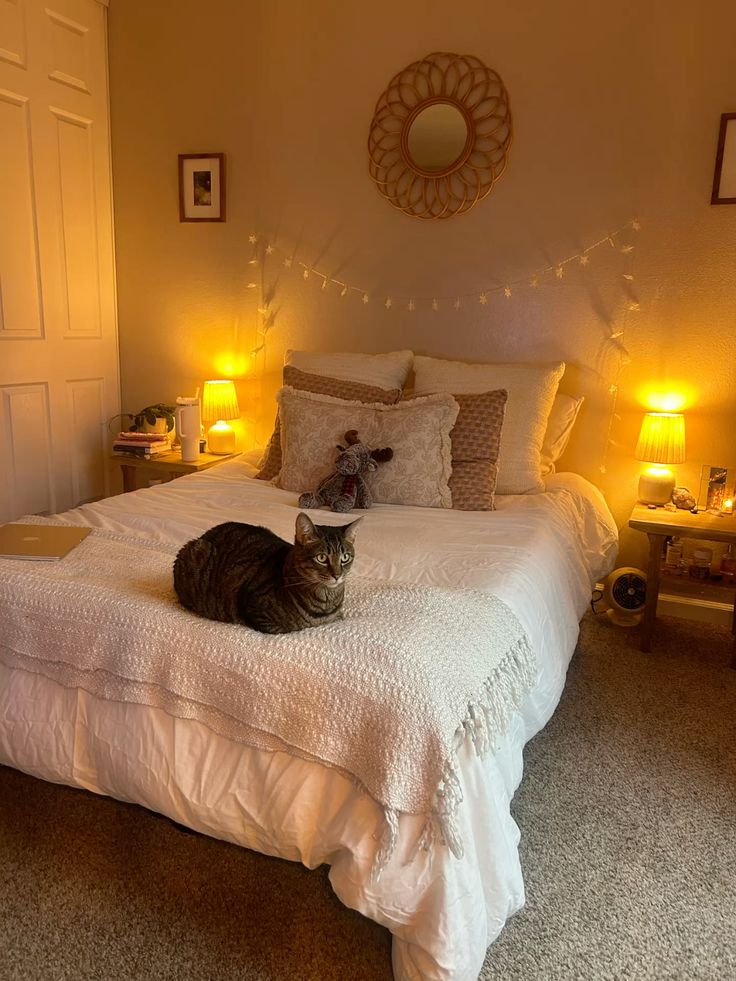
Fixtures with bronze, copper, or brass finishes pair well with autumn palettes. These metals reflect warm tones and add a natural feel. Matte or brushed finishes look less shiny and more rustic.
Wood or leather accents on fixtures can also work. They bring texture that matches fall’s earthy look.
Avoid chrome or bright silver finishes. These create a cold feel that clashes with fall colors.
Key finishes for autumn lighting:
| Finish | Effect | Good Match |
|---|---|---|
| Bronze | Warm and traditional | Reds, browns, oranges |
| Copper | Adds warmth and glow | Golds and deep reds |
| Brass | Bright but warm | Neutral and yellows |
Maintaining a Balanced and Timeless Look
Creating a home with an autumn color palette means mixing current trends with classic style. It also involves choosing decor that feels cozy during fall but still works all year.
Blending Trends with Classic Styles
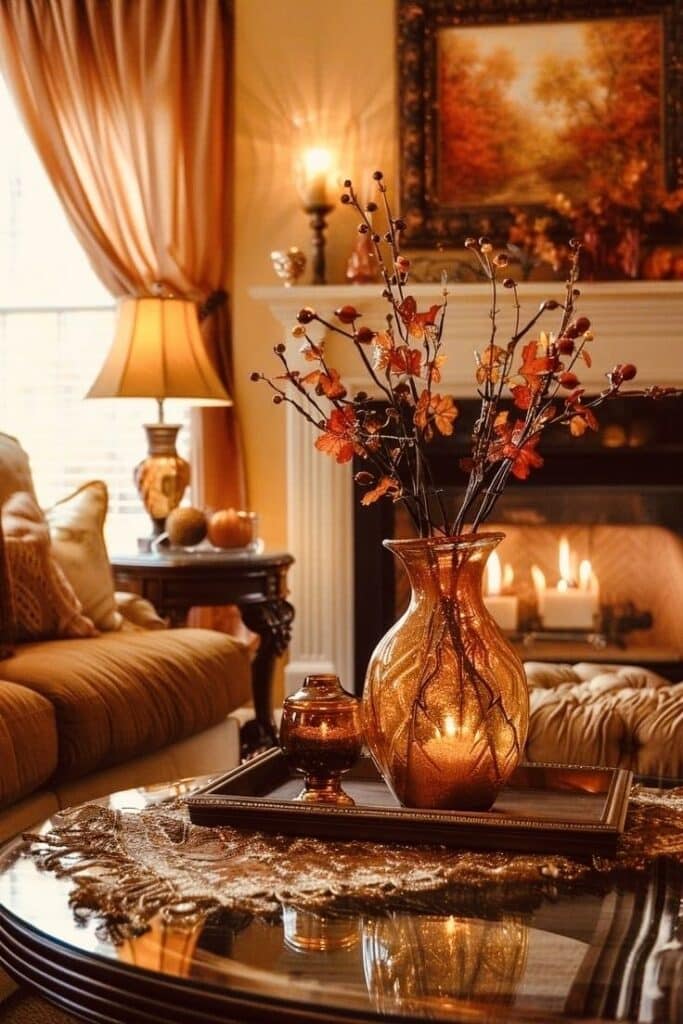
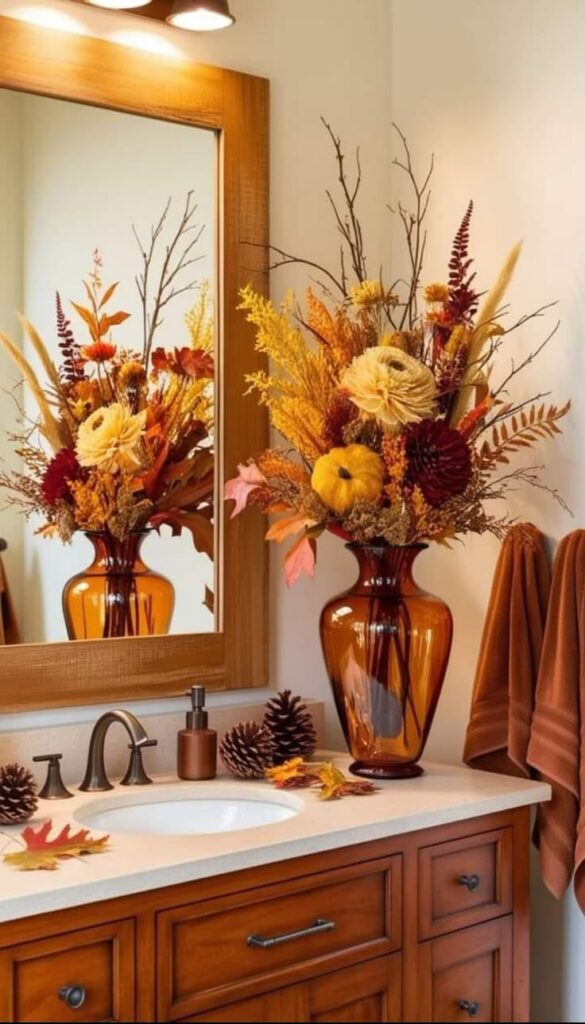
He should pick colors like deep orange or mustard yellow to add warmth. These shades work well with classic colors such as beige, cream, or gray. This mix keeps the room inviting without feeling too trendy.
Using natural materials like wood or linen complements the autumn colors. It creates texture and depth, making the space feel balanced.
Simple patterns like checks or stripes can be added on pillows or rugs. They bring interest without overwhelming the room.
Seasonal Decor Versus Year-Round Appeal
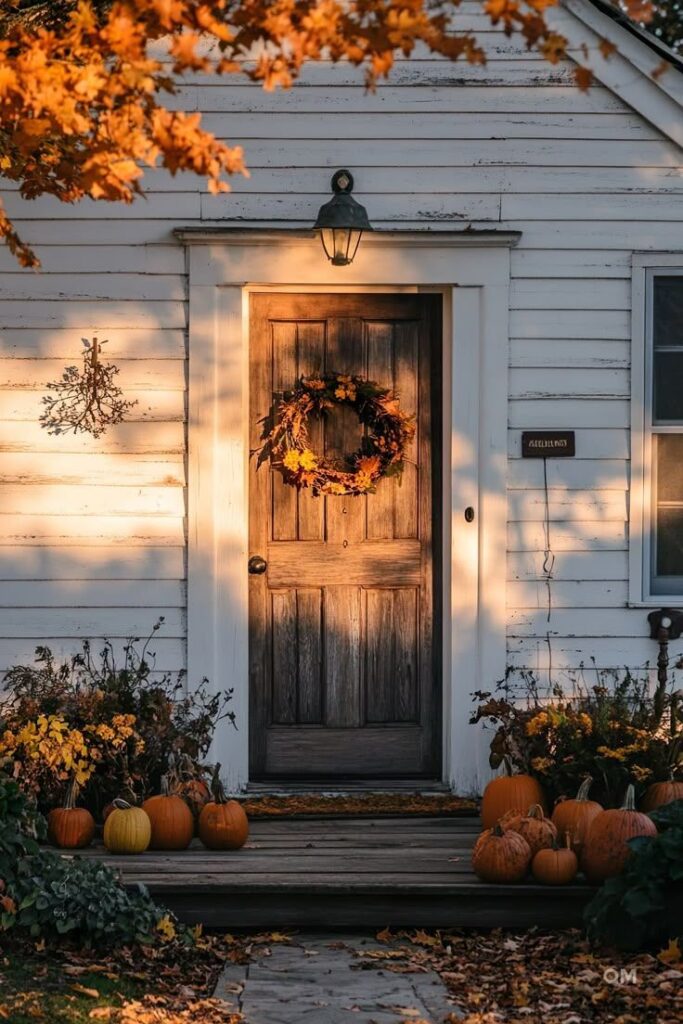
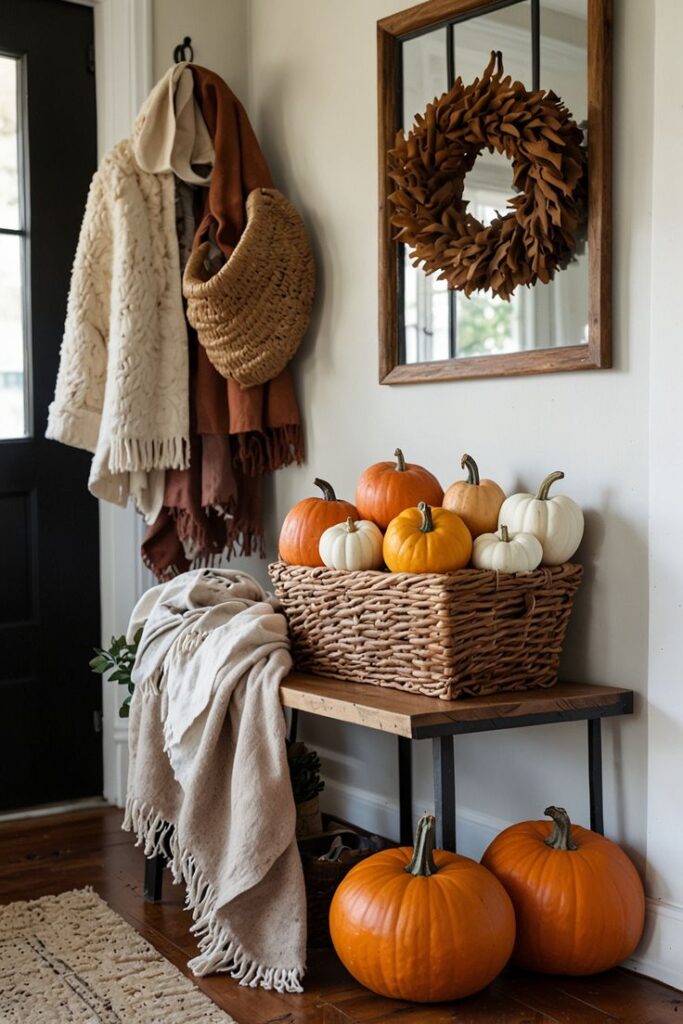
She can add small items for fall, like pumpkins or dried leaves, for seasonal touches. These items should be easy to remove once the season ends.
Furniture and large decor pieces should have colors and styles that fit all seasons. Neutrals with warm accents work best.
Keeping the base of the room neutral lets him swap out small decor pieces to reflect different seasons quickly. This approach avoids the need to redecorate completely each year.
- 407shares
- Facebook0
- Pinterest407
- Twitter0

